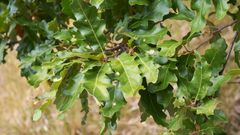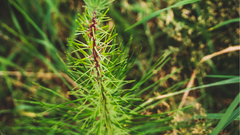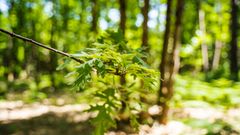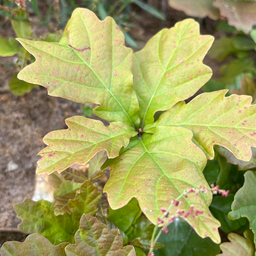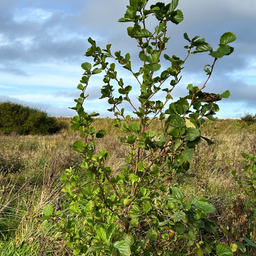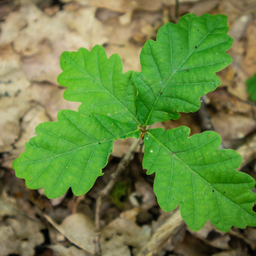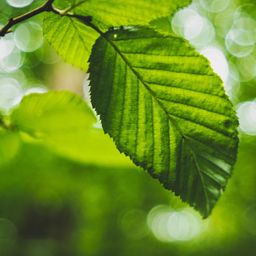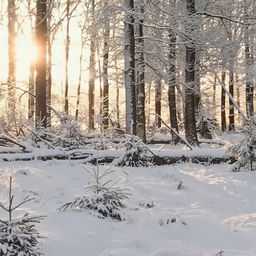Jul 28, 2021
World Nature Conservation Day: 5 ways you can make a difference with EcoTree
Learn the difference between nature preservation and conservation and discover 5 ways you can make a difference on World Nature Conservation Day with EcoTree.

July 28 is World Nature Conservation Day: a day to acknowledge that a healthy environment is the foundation for a healthy society. Do you know the difference between nature conservation and preservation? Nature preservation seeks to protect the environment from human use. Nature conservation on the other hand, entails the protection, management, or restoration of natural environments and their communities. It encourages the responsible use of our planet’s natural resources. At EcoTree, we believe that nature can flourish and provide at the same time. Here’s how you can make a difference with us.
1. Get more people involved in protecting European forests
How do you get people to take environmental action? You reward them and make it personal. Financial rewards have been proven to motivate people to return plastic bottles and cans in several countries, and we are using the same method! As a way to motivate people to invest in sustainable forestry, we offer tree ownership, meaning you receive all profit from your tree’s wood once it gets cut. Besides, the ownership makes people feel more connected: being able to follow the increased value and carbon captured by your very own tree just feels different. Lastly, it’s always a good idea to have many different stakeholders to make sure that there isn’t one party making crucial decisions. This is especially important when it comes to forests: dividing the ownership of the trees is a great way to protect the forest as a whole.
2. Support the production of sustainable resources for future generations
Wood isn’t just beautiful, it’s amazingly sustainable as well. First of all, the carbon captured by a tree during its lifetime stays locked in the wood for hundreds of years. So for example the beams used in buildings are acting as carbon storage! Second, the production of wood has a much smaller carbon footprint than for example steel or concrete. Wood doesn’t deplete our earth of its resources, and it can be produced locally, allowing minimum transport. Plus, it’s the only renewable construction material.
3. Support local communities
Forestry is not only a busy industry, creating job opportunities for local communities (for example people taking care of the forests and working in the sawmills). Forests are also beneficial for nearby farmers, as trees reduce soil erosion, improve the capacity of the soil to hold water, offer shadow and shelter for animals, and even generate additional income for the farmers when they’re fruit-bearing trees.
4. Support reforestation and habitat restoration
Deforestation is responsible for 11% of all greenhouse gas emissions and thus one of the main drivers of climate change. Besides, humans aren’t the only species benefiting from sustainable forestry. 80% of all land animals live in forests. Reforestation is vital in the fight against climate change and in restoring the habitats of many wildlife species whose homes are being destroyed. We buy neglected pieces of land and clear cut forests to plant new trees, creating safe havens for other plant species and animals. We make sure that the trees in every forest have a variety of species and ages, which is necessary for a forest to thrive. And for every tree we selectively cut, we plant three new ones.
5. Forests thrive when they are taken care of
Some people argue that forests are healthiest when they remain untouched. What’s important to know though is that when managed sustainably, forests actually thrive when they are well taken care of. Not only do we protect your trees from diseases without using chemicals and make sure they have enough space and light to properly grow into a majestic forest, we also manage many biodiversity projects. Wetlands are being restored to attract species who live in wet areas, honey hedges are grown to support pollinating insects in finding food, and beehives are placed to increase the bee population.
What makes EcoTree different from other tree planting initiatives, is our long term, sustainable approach to forestry. When you buy a tree with us, you become the owner. You, together with many other tree owners, invest in the trees which we take care of ourselves. Once the trees are selectively cut, the wood is sold to sawmills to be used as sustainable timber. There is no middleman, and all profit goes to you. This way we strive to make forestry available to everyone, in a transparent and approachable way.
